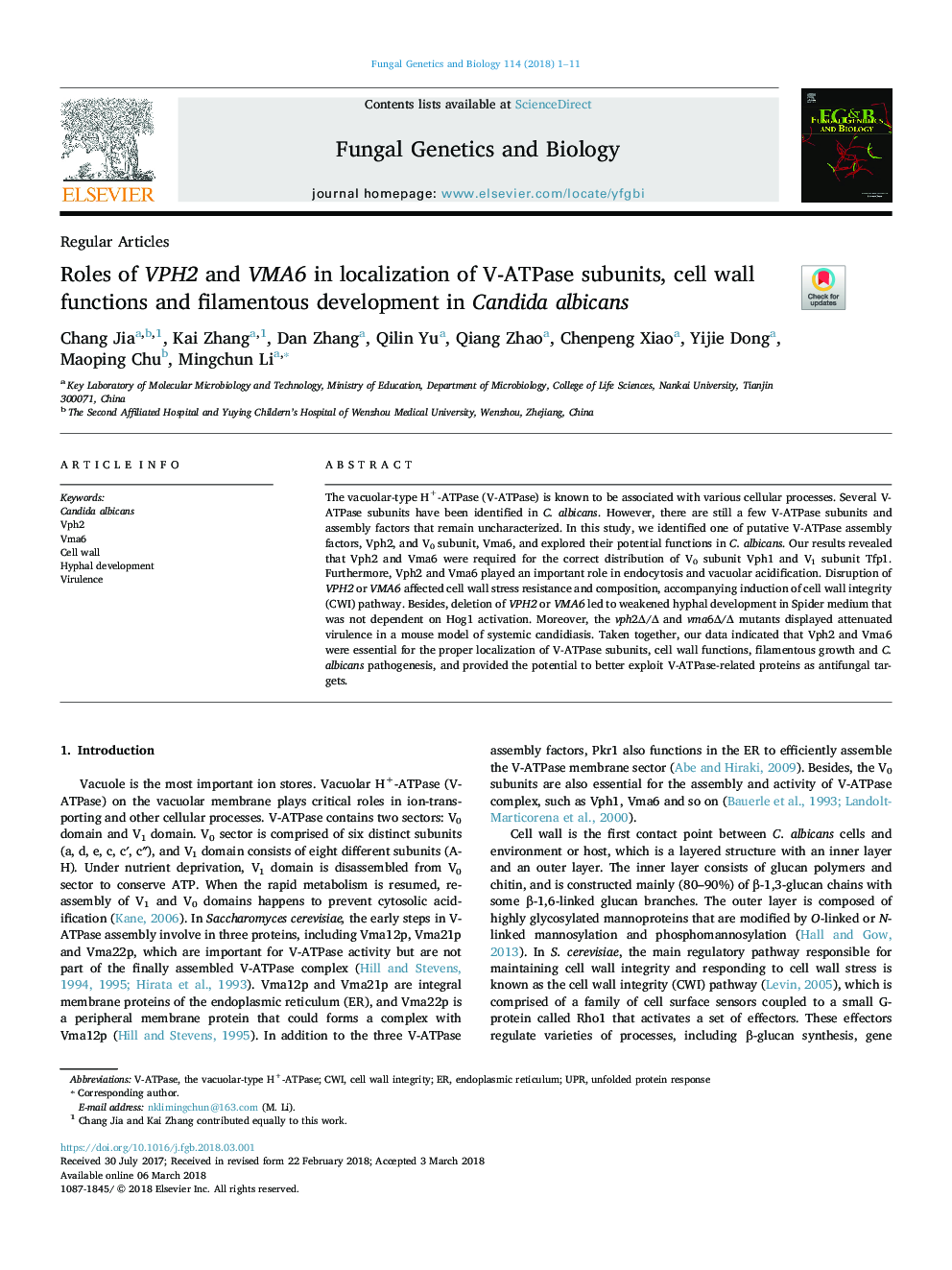| Article ID | Journal | Published Year | Pages | File Type |
|---|---|---|---|---|
| 8470426 | Fungal Genetics and Biology | 2018 | 11 Pages |
Abstract
The vacuolar-type H+-ATPase (V-ATPase) is known to be associated with various cellular processes. Several V-ATPase subunits have been identified in C. albicans. However, there are still a few V-ATPase subunits and assembly factors that remain uncharacterized. In this study, we identified one of putative V-ATPase assembly factors, Vph2, and V0 subunit, Vma6, and explored their potential functions in C. albicans. Our results revealed that Vph2 and Vma6 were required for the correct distribution of V0 subunit Vph1 and V1 subunit Tfp1. Furthermore, Vph2 and Vma6 played an important role in endocytosis and vacuolar acidification. Disruption of VPH2 or VMA6 affected cell wall stress resistance and composition, accompanying induction of cell wall integrity (CWI) pathway. Besides, deletion of VPH2 or VMA6 led to weakened hyphal development in Spider medium that was not dependent on Hog1 activation. Moreover, the vph2Î/Î and vma6Î/Î mutants displayed attenuated virulence in a mouse model of systemic candidiasis. Taken together, our data indicated that Vph2 and Vma6 were essential for the proper localization of V-ATPase subunits, cell wall functions, filamentous growth and C. albicans pathogenesis, and provided the potential to better exploit V-ATPase-related proteins as antifungal targets.
Keywords
Related Topics
Life Sciences
Biochemistry, Genetics and Molecular Biology
Cell Biology
Authors
Chang Jia, Kai Zhang, Dan Zhang, Qilin Yu, Qiang Zhao, Chenpeng Xiao, Yijie Dong, Maoping Chu, Mingchun Li,
